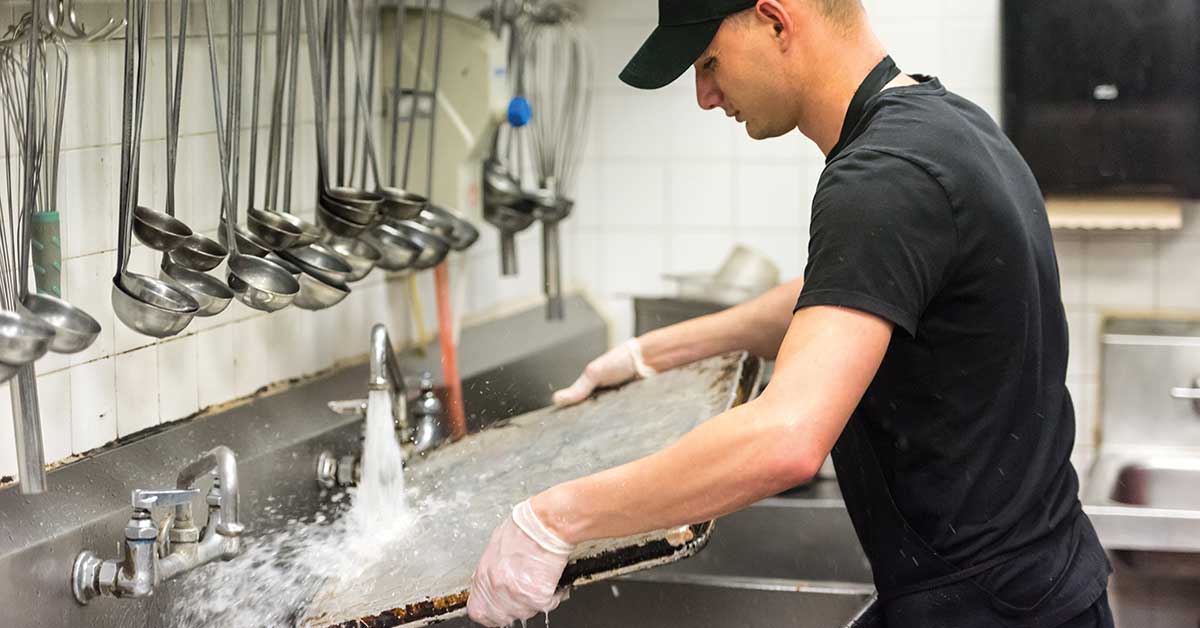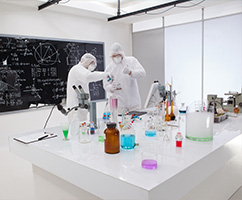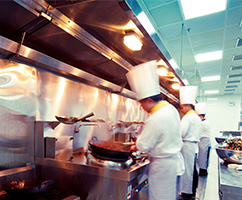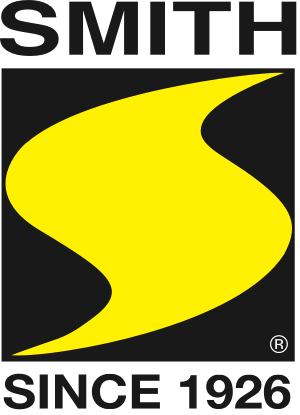
When our customers inquire about what type of drain they should purchase, one of the first questions we ask is where it will be used, followed by what you intend to put down it.
These questions are essential both for proper sizing and to narrow down the viable materials that will withstand the intended type of use. For example, we recommend our “Best in Class” stainless steel drains for commercial kitchens, breweries, wineries, and creameries. A significant benefit of these drains is that they are easy to clean and are less likely to harbor bacteria. If you have horses, we know just what you need for that, too.
Some people may not be familiar with what can safely be disposed of down a drain, but this information is incredibly important. If you pour out the wrong liquid, toxic or not, it could cause significant problems for your municipality’s sewer system. Sewer system issues ultimately affect every person through taxes, higher sewer rates, and the stability of environmental health.
For this reason, we’ve put together some tips on what should and should not go down the drain. First, we’ll consider our laboratory and manufacturing clients’ unique needs, then move on to our commercial kitchen customers.
The following is in no way a comprehensive list of the dos and don’ts of proper drain usage. Still, it should help prevent you from making the most common and destructive mistakes.

Lab Drain Usage
While every lab will have its specific procedures on how to dispose of waste, there are some basics that everyone should be aware of, which we’ve included here.
The Proper Disposal of Chemicals
The USDA says that quantities of chemical waste for drain disposal should generally be limited to a few hundred grams/milliliters or less per day. Larger amounts should have prior approval from Life Safety Services.
Disposal should always be followed by flushing with at least 100 times more water than the amount of waste you put down the drain.
For example, if you put 100 ml of a chemical (one approved for this type of disposal) through your drain, you would want to run the water for at least two minutes at the maximum flow.
That’s just the basic guideline and is by no means a thorough overview of proper hazardous waste disposal. For more information, this article covers the topic in greater depth.
Chemicals That Can Be Poured Down the Drain
According to the USDA, chemicals on the safe list can be poured down your drains, but only if that drain flows into the sanitary sewer system. Wastewater treatment plants are often able to handle these “safe list” chemicals and waste. However, before you dispose of any chemicals in this way, you should first verify with your local facility what substances they consider acceptable for treatment. You should also check with your state and local authorities for specific regulations in your area.
Chemicals and waste should never be put down a drain connected to a storm drain because that system flows directly into local waterways.
Chemicals You MAY Be Able to Wash Down the Drain
Again, please check your lab’s procedures, the USDA site, and your local authorities to ensure the following chemicals can be safely washed down your drain.
- Concentrated and diluted acids and alkalis
- Harmless soluble inorganic salts
- Alcohols containing salts
- Hypochlorite solutions
- Fine silica and alumina
Chemicals That Should NOT Go Down the Drain
Some chemicals that are not appropriate for drain disposal according to the USDA include:
- Ether (both ethyl and methyl ethers)
- Halogenated hydrocarbons
- Nitro compounds
- Mercaptans
- Flammables (immiscible in water)
- Explosives such as azides and peroxides
- Water-soluble polymers that could form gels in the sewer system
- Water-reactive materials
- Malodorous chemicals
- Toxic chemicals such as carcinogens, mutagens, or teratogens
- Chloroform
- Substances that boil below 50° C
- Mixtures that have a component not found on the safe list
- Any material not found on the safe list or prohibited by regional regulations
Why Proper Disposal Is So Very Important
- Everything you pour down your drain eventually makes its way back into the ground and waterways. It gets into the food and water that you, plants, and animals consume.
- Improper waste disposal can result in your lab or manufacturing plant being fined tens of thousands of dollars a day by environmental agencies . In some cases, authorities may even shut down your business.
- Some chemicals will interact with one another and create a more hazardous chemical. A good example that most people are aware of is ammonia and bleach—they form a highly toxic gas when combined.
- Your wastewater treatment plant may not be able to treat metals and other toxic chemicals. They may damage or kill the microorganisms a treatment plant needs to maintain balance and process waste properly. Corrosive, volatile, or hazardous materials deteriorate piping and possibly imperil the health and safety of both workers and the general public.

Commercial Kitchen Drain Usage
Proper commercial kitchen drain usage is everyone’s business. Therefore, you want to regularly advise your staff of what can and cannot go down the drains, whether in the sink or the floor.
Can you pour grease down the sink? Even just a little bit?
No, you cannot. Mixing grease with hot water and/or dish soap and processing it through a garbage disposal does not make it okay either.
Fatty wastes will eventually congeal at room temperature. Even the hottest water will not be able to keep the grease warm forever. The greasy residue will coat the inside of your pipes, trapping other food particles. Dish soaps can break down fats temporarily, but it is not going to be enough to counteract the ill effects of grease forever. A garbage disposal will not change how the oil behaves once the fat finds its home in your pipes.
Fats are less dense than water and are hydrophobic—meaning grease and water will not mix. Between floating to the top of any liquid and refusing to dissolve, fats do everything they can to fight being flushed down the drain.
What about liquid cooking oils?
No. While fats that are solid at room temperature pose the most significant risk to the health of your pipes, vegetable oil still causes issues. Liquid oils are also hydrophobic, making it difficult to wash them out. As they coat the inside of your plumbing, food particles stick to the walls and gum up the whole operation.
What are fatbergs?
You might be thinking, “We’ve dumped a bit of oil into our drains for years, and our restaurant plumbing has been working just fine.”
Unfortunately, many people take shortcuts and dump a bit of fat here and there down their drains. Just because you haven’t had problems yet doesn’t mean you won’t in the future.
This “little bit” of dumping every now and then has a tremendous negative impact on the wastewater system—because everyone is doing it. Those small amounts of fat join together in the sewer and create what the sewer industry calls a fatberg. They have a memorable name for this phenomenon, indicating just how big a problem fatbergs are.
As we mentioned previously, all those fats will coagulate and harden. They also cling to other items that do not break down as the grease comes across them—things such as flushable wipes. Like an iceberg, it can result in disaster and is a problem in cities throughout the world.
Other Common Commercial Kitchen Waste that Should Not Go Down the Drain
- Coffee grounds
- Eggshells
- Rice and grains
- Doughs and batters
Just like laboratories can be fined for putting things they should not down the drain, so too can restaurants. The accumulated fats, oils, and greases (FOG) can completely clog the insides of pipes—both your own and the city’s—until the system simply cannot handle the amount of waste traveling through it, and a sanitary sewer overflow occurs. SSOs cause sewage to back up into your business, into people’s basements, onto the streets, or into storm drains and local waterways—anywhere it can find an outlet.
That’s why your business could face hefty fines if it is determined to be responsible. Sewer authorities can easily find the source of the problem these days, so you are not likely to get away with it for very long.
The Proper Way to Dispose of Kitchen Grease
First, let’s differentiate between yellow and brown greases. Yellow grease is basically used cooking oil (UCO) collected from range hood filters, grills, and fryers; it has not come into contact with water. It can be recycled and is used in many products, such as biodiesel and glycerin for cosmetics and soaps. Typically, kitchens contract with licensed companies to haul their yellow grease away and provide a fresh supply of cooking oil.
Brown grease is the FOG mentioned above—fats, oils, and greases that are the inevitable byproduct of food preparation and dish washing. Even the most diligent kitchen staff cannot prevent every ounce of grease from getting into the drains, so how do you prevent FOG from clogging the sewer system once it’s mixed with water?
Every commercial kitchen should have a hydromechanical grease interceptor, or grease trap, a plumbing device designed to intercept most FOG before it hits the sewer system. Once it reaches a certain level, it must be removed by a licensed disposal company.
Wrapping Up
We hope this information has convinced you to take your drains and what passes through them a bit more seriously. If you have any questions about drains and what materials are most appropriate for your use, please contact us today. We are always happy to help!
